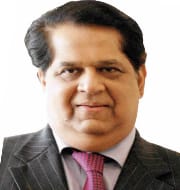What is KV Kamath Committee?
The Reserve Bank of India had constituted a five-member expert committee under KV Kamath. He was the former CEO of ICICI Bank. The apex bank recently notified that it is to cover twenty-six stressed sectors under the TLTRO (Targeted Long-Term Repo Operations) Scheme. These twenty-six stressed sectors were identified by the KV Kamath Committee.
Highlights
The Reserve Bank of India has directed the banks to avail funds from two schemes namely ECLGS 2.0 (Emergency Credit Line Guarantee Scheme) and TLRO scheme to provide credit support to the stressed sectors. Under the TLRO scheme, the banks can invest in corporate bonds, non-convertible debentures and commercial papers issued by the entities in specific sectors.
The TLRO scheme was announced to channelise liquidity to small and mid-sized corporates, micro finance institutions and Non-Banking Financial Corporation. The RBI is to conduct on-tap TLRO up to three years at floating rate linked to the policy repo rate.
The Government of India launched the ECLGS 2.0 to provide 100% collateral free additional credit to the twenty-six stressed sectors identified by the KV Kamath Committee.
Background
Reserve Bank of India has released a framework for “Resolution of COVID Related Stress” for addressing borrower defaults during the COVID pandemic and related national lock down. The framework mentioned that, an Expert Committee would be constituted by RBI for making recommendations on financial parameters required to be studied while implementing the resolution framework. In view of the above, the RBI constituted a five-member committee under the chairmanship of former ICICI Bank Chief Executive KV Kamath. The committee made a detailed analysis and recommended that all lending institutions should mandatorily consider the 5 important financial rations during COVID related restructuring of loans. Also, the committee recommended sector specific ration to be complied by the financial institutions. These recommendations have been accepted by the Reserve Bank of India and have been implemented.
Month: Current Affairs - December, 2020


